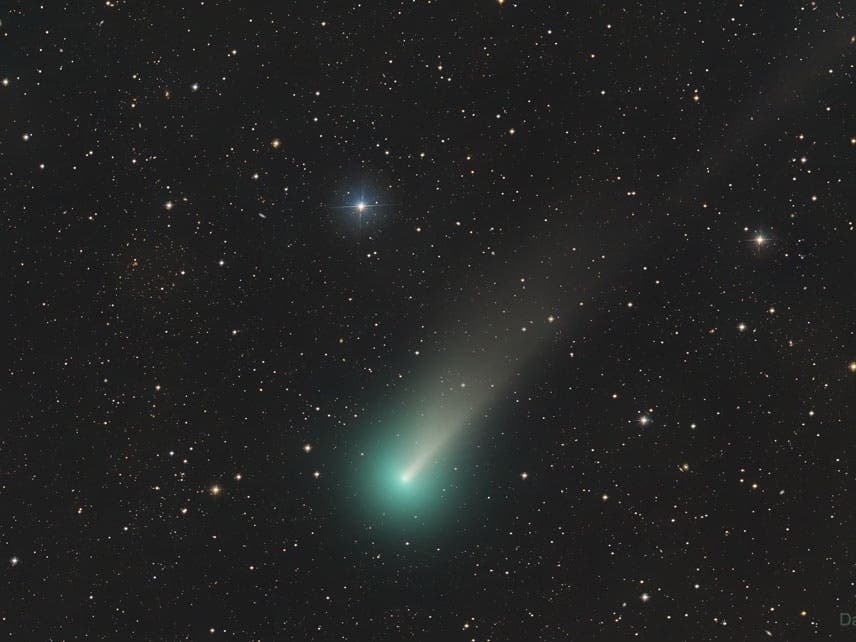Weather
‘Christmas Comet’: When To Watch For Leonard In Birmingham
We may be able to see comet Leonard and its impressive tail in Birmingham at least through mid-December.

BIRMINGHAM, MI — It’s time to start scanning the skies over Birmingham to see comet Leonard, which astronomers expect to show off its tail as it comes closer to our planet and the sun in its eons-long orbit.
Because of the timing of its close approach, Leonard has been called the “Christmas comet.” It will be closest to Earth on Dec. 12, but you may be able to spot it in the days before and after — though the longer you wait, the more difficult comet Leonard will be to see before it leaves our solar system.
Keep this in mind: Comets are “notoriously difficult to predict in terms of brightness and visibility,” according to NASA. They’re brightest when they’re nearest to the sun, and its glare makes them difficult to see.
Find out what's happening in Birminghamwith free, real-time updates from Patch.
Live in Birmingham? Click here to subscribe to our free breaking news alerts delivered to your inbox and mobile devices. Follow us on Facebook and Twitter, and download our free mobile app on Android or iPhone.
Still, astronomers say comet Leonard (C/2021 A1) could be as spectacular as comet Neowise was in 2020, and skywatchers may be able to see the Christmas comet with small telescopes or binoculars.
Find out what's happening in Birminghamwith free, real-time updates from Patch.
“There’s a chance it could be bright enough to see with the unaided eye,” NASA said in a discussion about spectacles in the December sky, “but again, with comets, you really never know.”
The comet comes closest to Earth — by close, we mean 21,687,279 miles away — at 10:54 a.m. EST on Dec. 12, a time of day bathed in daylight. So, morning twilight is the best time to see it.
Look at the eastern sky just before sunrise. The comet will pass between Arcturus — the fourth-brightest star in the night sky, and the brightest in the northern constellation of Boötes — and the handle of the Big Dipper.
The sky will be free of moonlight when Leonard is at its brightest. That should afford some views of the comet’s dust tail, which began to noticeably lengthen in early November. It should be pointing straight up.
“It approaches the horizon right around the time of its closest approach to Earth, meaning it'll likely be brighter but more challenging to observe,” according to NASA. “It then switches over to being an evening object after around Dec. 14th, for just a little while after the Sun sets — as it begins its long haul outward from the Sun again, progressively fading in brightness.”
Astronomer Gregory J. Leonard discovered the comet that now bears his name on Jan. 3, 2021, from the Mount Lemmon Infrared Observatory, located in the Santa Catalina Mountains about 17 miles from Tucson, Arizona.
Leonard, a senior research specialist at the observatory, saw a tail — which astronomers say is a promising sign that we’re in for a treat as the comet moves ever closer to Earth and the sun.
Comet Leonard was only discovered last year, but the icy ball has been making its way to our planet’s solar system since the Paleolithic era.
It started the journey 35,000 years ago, when it was at the far end of its elongated elliptical orbit, called the aphelion, some 325 billion miles from the sun, “enveloped in an almost unimaginably cold environment, hovering just a fraction of a degree above absolute zero, the temperature at which all molecular motion stops,” according to Space.com.
“Now, Comet Leonard is in the home stretch of what likely will be its very last visit to the sun, and its conglomeration of icy gases like methane, ammonia and water vapor is reacting to the increasing warmth of the sun.”
The comet will make its closest approach to the sun around Jan. 3. It will be about 56 million miles away at that point.
Get more local news delivered straight to your inbox. Sign up for free Patch newsletters and alerts.